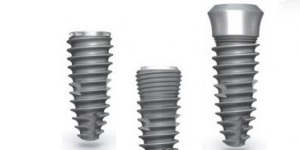
زمان ترمیم پیوند استخوان
2015-10-17
کشیدن دندان جهت ایمپلنت
2015-10-18Geographic tongue is the name of a condition that gets its name from its map-like appearance on the upper surface and sides of the tongue. It may occur in other areas of your mouth, as well
You’ll be relieved to know that geographic tongue is a harmless, benign condition that isn’t linked to any infection or cancer. Two other names for geographic tongue are benign migratory glossitis and erythema migrans
Affecting about 1% to 3% of people, geographic tongue can show up at any age. However, it tends to affect middle-aged or older adults more often. It appears to be more common in women than in men
Symptoms of Geographic Tongue
The telltale signs of geographic tongue are irregular, smooth, red patches on parts of the tongue. These patches may
Have a white or light-colored border
Vary in size, shape, and color
Appear one area, and then move to another area
Come and go or change very quickly in days, weeks, or months
Last up to a year
You may be unaware that you have geographic tongue until your dentist or other health care provider diagnoses it during an oral exam
About one in 10 people with geographic tongue may have mild discomfort or a burning or painful sensation. This is often from sensitivity to substances such as
Hot, spicy, or acidic foods
Cigarette smoke
Toothpaste
Causes and Risk Factors
Geographic tongue occurs when parts of the tongue are missing layers of small bumps called papillae. They normally cover the entire upper layer of your tongue. Why do you lose these papillae with geographic tongue? Nobody knows for sure. However, because geographic tongue tends to run in families, genetics may be a common link
Geographic tongue has also been seen more frequently in people with psoriasis and in those with fissured tongue. In fissured tongue, cracks and grooves appear on the tops and sides of the tongue
Treatment or Self-Care for Geographic Tongue
Seeing a dentist or doctor is the best way to rule out a more serious problem. In most cases, he or she can diagnose geographic tongue from a description of your symptoms and from examining your mouth and tongue. You may need tests to rule out other medical conditions
In most cases, any pain or discomfort will get better without treatment. But if you have severe, ongoing pain, medication can help. These are examples of what your doctor or dentist may prescribe
Over-the-counter pain relievers
Anti-inflammatories
Mouth rinses with anesthetic
Corticosteroids applied directly on the tongue
Zinc supplements
If you’re wondering about steps you can take to hasten the relief of symptoms, try limiting these substances or avoid them altogether
Tobacco
Hot, spicy, or acidic foods or dried, salty nuts
Toothpaste with additives, whitening agents, or heavy flavoring (toothpaste for sensitive teeth is a better choice)
Geographic tongue Symptoms
Signs and symptoms of geographic tongue may include
Smooth, red, irregularly shaped patches (lesions) on the top or side of your tongue
Frequent changes in the location, size and shape of lesions
Discomfort, pain or burning sensation in some cases, most often related to eating hot, spicy, salty or acidic foods
Many people with geographic tongue have no symptoms
Geographic tongue can persist for months or years. The problem often resolves on its own but may appear again at a later time
When to see a doctor
Geographic tongue is a minor — although sometimes uncomfortable — condition. However, lesions on the tongue may indicate other more serious conditions of the tongue or diseases affecting the body in general. If you have lesions on the tongue that don’t resolve within seven to 10 days, see your doctor or dentist






